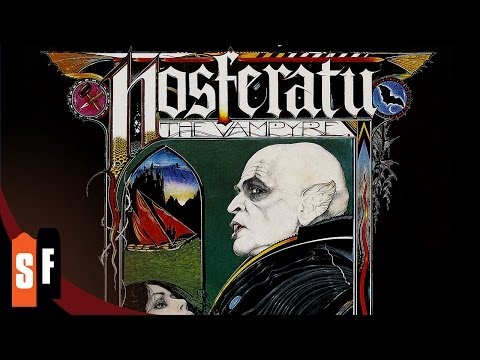Werner Herzog’s “Nosferatu the Vampyre” (1979) is among the most faithful film adaptations of Bram Stoker’s “Dracula.”
It’s also one of the strangest.
Herzog, Germany’s extraordinary chronicler of natural beauty, human obsession and unorthodox living, made a film that, while dutiful in the way it recreates the well-told vampire tale, is in line with his legendary “Fitzcarraldo” (1982) and others.

Bruno Ganz stars as Jonathan Harker, the real estate agent who has the misfortune of paying a visit to the home of Count Dracula (Herzog regular and legendary actor Klaus Kinski). Harker’s fiancée Lucy (Isabelle Adjani, my favorite living actress), immediately realizes there’s something wrong with Harker upon his return.
Renfield, Dracula’s prior victim (played amusingly over the top by “The Tenant” author Roland Topor, of all people) knows that Dracula, an ancient vampire, is beginning a new reign of terror.
The greatest distinction in Herzog’s approach is how he doesn’t go for a Gothic Romance and attempt to mimic the look of either the Universal films, nor the Hammer classics. Instead, Herzog has the action take place in real locations, making much of this feel like a travelogue and as real to life as possible.
RELATED: ‘SALEM’S LOT’ DELIVERED TIMELESS NIGHTMARE FUEL
One would never think they were looking at either cheap cardboard sets nor extravagant recreations of dark towers, swarming with bats. Here, Castle Dracula resembles a badly rotted castle. Many scenes have fleets of rats running everywhere.
Herzog’s documentaries have always proved amazing for the seemingly impossible subjects they cover, while his fictional works are portraits of reckless human obsession. In addition to the Kinski-starring “Fitzcarraldo” (which may wind up being Herzog’s greatest work) or the gonzo Nicolas Cage starring “Bad Lieutenant: Port of Call: New Orleans” (2009), this moody, chicken skin inducing horror film gives us a Dracula who seems weary from the destruction he has brought on the living.

Kinski’s Count Dracula comes across as a sinister and corrupt man, rotting away from an incurable disease – there’s nothing sophisticated about him, though there is always calculation in his eyes. Kinski closely resembles Count Orlok from F.W. Murnau’s 1922 silent film, though the intensity in his performance is different.
There are no jump scares here, but Kinski is always scary, conveying the danger in his every appearance. Adjani is perfection as the object of Dracula’s desire, resembling a silent film actress and finding the emotional core of her role.
Herzog’s film is slow to start and concentrates more on mood and environment than rushing to each story point. Despite the unhurried pacing, its best passages, particularly those in which Kinski or Adjani are the focus, are hypnotic.
The film’s PG rating means barely a visible drop of blood spilled onscreen, but Herzog immediately unsettles us with an opening credit sequence taking place in a tomb with real mummified bodies. Some will be accustomed to the sight, as the “Body Wars” exhibit has traveled worldwide, but I remain queasy at the view of a real sarcophagus.
The story takes a different turn at the very end, allowing an alternate result from Stoker. What happens to Dr. Van Helsing and especially Harker is truly creepy.
Yet, though there are nightmarish visions here (some of which are reproductions of images from Murnau’s film), Herzog’s documentary-like approach to capturing the rich environment dominates.
Theatrical release poster for Werner Herzog’s ‘Nosferatu the Vampyre’ (1979). Art by David Palladini. pic.twitter.com/SE3aet1OlF
— Tatiana Fajardo (@Tatiana19796) August 27, 2024
Of the three Dracula films of its year, Herzog’s film is preferable to the jokey, cornball hackfest that is “Love at First Bite” but not up to John Badham’s “Dracula.” The latter’s title character is played by a suave, eerie Frank Langella and Sir Laurence Olivier co-stars as Van Helsing.
Both are downright definitive in their interpretations.
Badham’s film is as exciting as it is engrossing, an R-rated affair full of the gothic gruesomeness found in Stoker’s story.
Yet, as both a companion piece to Murnau’s masterpiece and a double feature with Robert Egger’s new “Nosferatu,” Herzog’s “Nosferatu The Vampyre” is due for rediscovery. Bela Lugosi, Christopher Lee, Gary Oldman and Langella may be the more iconic takes on the character, but the sight of Kinski, with his bald, rat-like face and unfeeling eyes, will settle the deepest in your nightmares.
The post Is ‘Nosferatu the Vampyre’ the Creepiest Count Ever? appeared first on Hollywood in Toto.
0 Comments